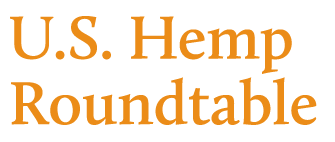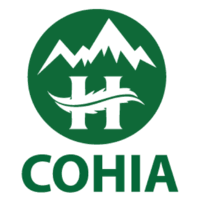Latest
Effects of the Ethanol Market on CBD Industry
PanXchange Blog
Financial and commodity markets, regardless of the industry, have changed due to the outbreak of COVID-19. Household names in the grain, airline, and other industries are struggling to cope with the rapid changes that have affected consumers and their buying habits. The American corn farmer is taking a one-two punch right on the chin with the US-China Trade deal virtually dead in the water. The same American farmer is watching the Latin American grain exports dominate the marine vessel tracker screen. Crude oil traded in negative values for the first time in contract history and ethanol prices neared record lows as gasoline consumption mirrored the same bearish trend.
Finding upsides in bearish markets
Hand sanitizer demand has skyrocketed during this pandemic, and due to some quick thinking from ethanol producers, production lines can continue to stay busy during these times. Poet LLC, the world’s largest ethanol producer, produced ~2 billion gallons of ethanol before the coronavirus’s impact on the world. Thanks to some quick retooling of production equipment and corporate strategy, Poet was able to adapt to changing market dynamics and produce hand sanitizer to keep the lights on. Although Poet did close some production sites and was forced to lay off around 10% of its staff, its CEO has been quoted as saying that the company intends to stay in hand sanitizer even after the expected recovery in gasoline demand.
What does ethanol have to do with gasoline?
In 2007, Congress passed the Renewable Fuel Standard (RFS). This federal program established rules surrounding transportation fuel sold in the US, specifically concerning the minimum content of renewable energy contained within said fuel. The RFS requires renewable fuel to be blended in increasing amounts each year, escalating to 36 billion gallons by 2022. Most states require retail gasoline to contain 10%-15% ethanol blended with gasoline to comply. Understandably, the two markets are notably linked and wholesale prices in the market often move in conjunction. In the wake of a volatile market, ethanol equities are in the green across the board, showing investor sentiment that gasoline demand will return as pockets of the country begin to reopen.
Why is this important to the hemp industry right now?
Although ethanol is closely associated with retail gasoline and American corn production, commodity markets are becoming ever more connected as industries search for substitute inputs to stay competitive. In a highly competitive market, the efficient use of capital is essential to react to changing margins. It is no secret that ethanol comprises a significant portion of input costs during the first stage extraction process, and the changing prices provide an opportunity to plan ahead. Specifically in the hemp and cannabis extraction industry, ethanol has taken its place as a vital input. With ethanol producers struggling to find demand in their traditional outlets, more focus is placed on the non-traditional. PanXchange spoke to one ethanol wholesaler who told us that they are offering some “really competitive deals, especially if a customer has storage and can buy ahead of time”. Lower input costs may be competitively advantageous (to ethanol-based) extractors, especially when gasoline demand returns, and subsequently the price of ethanol rises. Something to keep an eye on as we enter the 2020 crop year.
Are there other ways to extract hemp into CBD oil?
Although the primary focus of this post is an analysis of the fundamentals of other commodity markets and how they affect our industry, we would be remiss if we did not include a few sentences on extraction methods in general. Besides ethanol extraction, popular methods of extraction include CO2, Pentane, Hexane, and a few other experimental solventless methods. Something to keep in mind, however, is that even whilst utilizing these other forms of extraction, ethanol is still used in the winterization process in the early stages of extraction.
So are ethanol-based extractors switching production to hand sanitizer? What kinds of issues are they facing?
Low price per pound of CBD and price per liter of refined products has caused extractors to look for alternate uses of their assets. With a simple retooling process (both mentally and mechanically), extractors can continue to produce products with significant demand. However, similar to the CBD market, a murky legislative landscape puts the burden on the producer to market the goods. As referenced by the NY Times, Amazon (as well as other resellers and online marketplaces) have struggled with criticisms that their services are enabling price gouging. Amazon has recently even asked for Federal guidelines on price gouging during a national emergency. Similar to the hemp industry, individual states have their own definitions and laws regarding price gouging, but there are no federal guidelines to rule all.
In case any extractors are curious about dipping into the estimated $3 billion hand sanitizer market, these are the requirements that the FDA published for extractors and distilleries:
FDA put out these requirements for extractors (and distilleries):
The guidance explains that FDA does not intend to take action against alcohol production firms that register their facilities with FDA and that manufacture alcohol for use as the active pharmaceutical ingredient (API) in alcohol-based hand sanitizers for consumer use and for use as health care personnel hand rubs for the duration of the public health emergency provided certain circumstances are present. The circumstances include the following:
- The alcohol (ethanol) is not less than 94.9% ethanol by volume, consistent with USP and FCC requirements for purity (if purity lower than USP and grade requirements, the product meets this condition if labeled accordingly and the content is sufficient to enable the finished hand sanitizer to meet the ethanol volume to content concentration of 80%.)
- Sterile water (e.g., by boiling, distillation or another process that results in water that meets the specifications for Purified Water USP).
- The alcohol (ethanol) is denatured either by the alcohol producer or at the point of production of the finished hand sanitizer product. See Alcohol and Tobacco Tax and Trade Bureau regulations in 27 CFR part 20 and 21.









